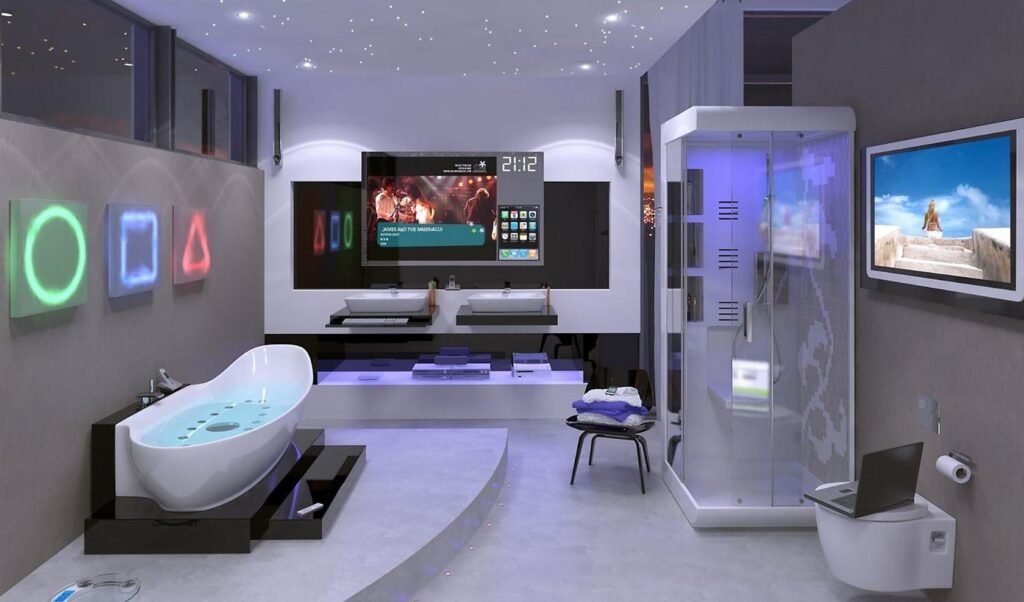IoT allows you to virtually turn your living quarters into a science fiction show and for the everyday individual who would like nothing more than having control over their outer environment (we all know its an ok substitute if we cannot have change in our inner world).
Smart homes have become a big craze in recent years and will continue to change the way we live as technology continues to rapidly evolve. Internet of Things (IoT), has emerged as the new mantra to enhance lifestyles making them more convenient, and secure. This article will delve deep into the idea of smart homes, lay down a few IoT devices that are really making things happen and discuss about what benefits it holds for us as well as some challenges.

Understanding Smart Homes
What is a Smart Home? A smart home can be defined as one that uses interconnected devices to access, control and automate through internet from anywhere in the world. This has come in the form of smart thermostats and lighting systems through to security cameras, kitchen appliances a wide range devices some be9low (*)( Internet Of Things). The main aim of the smart home is to deliver a better quality of life through automation and usefulness, giving consumers heightened control over their surroundings.
Smart Home Essentials: IoT Devices
Smart Thermostats: In the category of smart thermostats like the Nest Learning Thermostat, which learns residents’ schedule and desired temperature. Homeowners can regulate these wirelessly using a much simpler dedicated smartphone app to program which time of day they switch off and on, making this automation cost-saving.
Smart Lighting Systems: Philips Hue light bulbs and whole lighting systems let you control your home’s lights with voice or mobile apps. Some of these systems even have adjustable lighting schedules and can change colors to match the mood or event.
Smart Security Cameras and Doorbells – Ensure you have immediate visual surveillance with devices like the Ring Video Doorbell and Arlo security cameras, sending up-to-the-minute alerts as soon as they detect movement. In addition, the device can be configured to send alerts when motion is detected and forward video clips or still photos to an FTP server; thus enabling homeowners to keep a close watch on their property even from thousands of miles away.
Amazon Echo, Google Home and voice assistants are the most common examples of smart speakers. They can link other intelligent gadgets such as music players, weather broadcast systems and even be used to do daily activities.
Smart Kitchen Appliances: Smart fridges that monitor food quantity in them to ovens that can be heated from afar are some of the appliances changing how people cook. This is exemplified by brands like Samsung and LG who are leading in this new era of cooking convenience and efficacy.

Advantages of Smart Homes
The process of incorporating internet of things (IoT) into homes has many advantages, making it a preferred option for homeowners:
Convenience: Smart houses make everyday chores easier by doing them automatically. For instance, lights can be made to go on when one enters a room or coffee makers can be set to brew at specific times.
Energy Efficiency: Using smart devices helps reduce energy use. Smart thermostats ensure optimum heating and cooling while smart lighting systems ascertain that lights do not stay on unnecessarily thus leading to reduced electricity bills and lesser carbon footprints.
Enhanced Security: Real-time monitoring is possible with smart security systems that also provide instant notifications in case of any suspicious activities being detected. This secures the home and gives homeowners peace of mind.
Remote access: The ability to control home devices remotely is a significant advantage. Whether it’s adjusting the temperature at work or checking security cameras while on vacation, homeowners have everything at their fingertips. Lighting, temperature, and even music preferences can be adjusted to suit a person’s needs and preferences, creating a comfortable and enjoyable environment.
Difficulties and Things to Keep in Mind
Though they have many advantages, smart homes also have certain drawbacks and things to keep in mind:
Cost: Setting up a smart home can need a sizable upfront expenditure. Some households find the cost of high-quality smart gadgets and the associated infrastructure to be a hindrance.
Privacy and Security: As connectivity rises, so does the possibility of cyberattacks. To stop unwanted access and potential breaches, it’s essential to protect personal data and ensure the security of smart home networks.
Problems with Compatibility: Not every smart device works with every other one. It may be necessary for homeowners to invest more time and money to make sure the devices they select can operate in unison.
Technical Difficulties: For some people, installing and maintaining a smart home can be a technical challenge. Problems like firmware updates, debugging, and connectivity issues could call for technical expertise or expert support.
In summary
The idea of smart houses has evolved from being a sci-fi fantasy to a reality in the present day with the incorporation of IoT into daily life. Convenience, energy efficiency, and increased security are just a few of the many advantages that make smart homes more and more popular. However, when configuring a smart home, it is imperative to take into account the related difficulties and make wise choices. The future of smart homes is bright, offering an ever more automated and networked way of living as technology develops.
